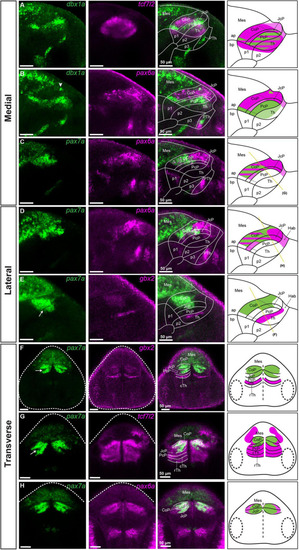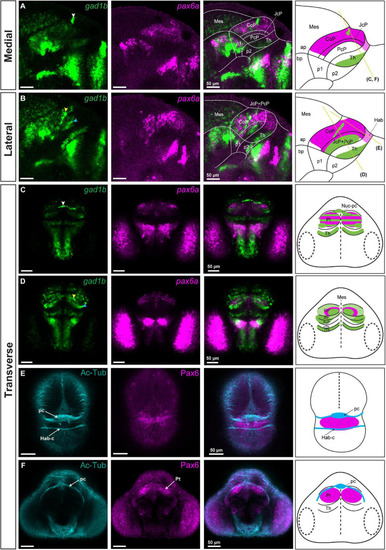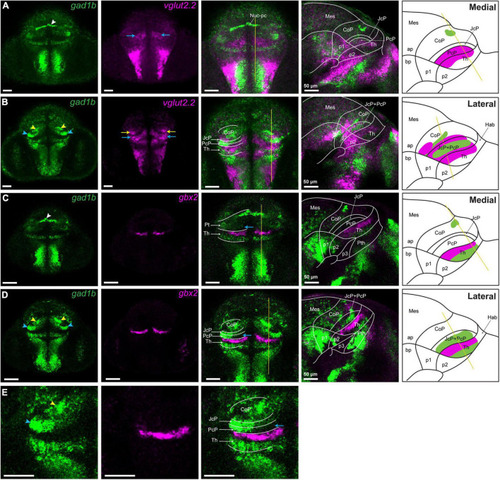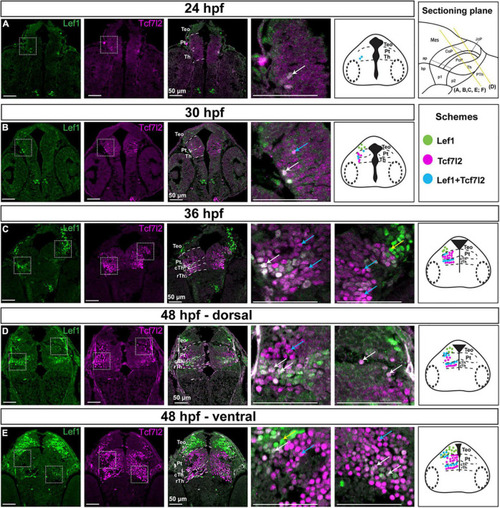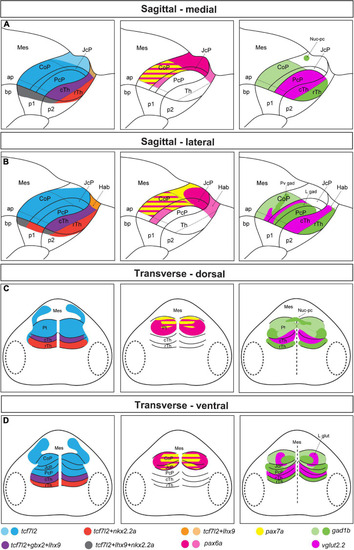- Title
-
Genoarchitecture of the Early Postmitotic Pretectum and the Role of Wnt Signaling in Shaping Pretectal Neurochemical Anatomy in Zebrafish
- Authors
- Brożko, N., Baggio, S., Lipiec, M.A., Jankowska, M., Szewczyk, Ł.M., Gabriel, M.O., Chakraborty, C., Ferran, J.L., Wiśniewska, M.B.
- Source
- Full text @ Front. Neuroanat.
|
Identification of pretectal boundaries in the diencephalon of 48 hpf zebrafish. Confocal Z-stack images showing brain sections stained using |
|
Subdivisions of the pretectum in the brain of 48 hpf zebrafish. Confocal Z-stack images showing brain sections stained using |
|
|
|
|
|
Spatiotemporal expression of the Lef1 and Tcf7l2 proteins in the brain of zebrafish embryos (24–48 hpf). Images showing brain sections from different developmental stages immunostained with antibodies specific for Lef1 and Tcf7l2. |
|
Spatiotemporal expression and subcellular localization of β-catenin in the brain of zebrafish embryos (27–48 hpf). Images showing brain sections from different developmental stages immunostained with antibodies specific for Tcf7l2 and β-catenin. |
|
Phenotypes in the pretectum of IWR-1-treated, |
|
Schematic summary of |


